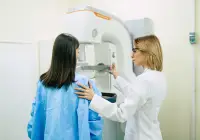Accurate recognition of patient deterioration has long been a cornerstone of safe and effective hospital care. The structured recording of vital signs dates back to the 19th century and was strengthened by the introduction of the National Early Warning Score (NEWS) in the United Kingdom in 2012, later updated to NEWS2 in 2017. This scoring system standardised responses to acute illness and contributed to reduced mortality, yet its predictive power remains limited. At the same time, the increasing use of digital tools and electronic health records provides an opportunity to harness artificial intelligence to enhance early detection of deterioration. A systematic programme of research has been developed to investigate which AI approaches are best suited to analysing routinely collected physiological data in order to improve clinical decision-making and patient safety.
The Limits of Traditional Early Warning Systems
The NEWS and NEWS2 frameworks marked a major step forward in standardising patient monitoring across the United Kingdom and internationally. They are widely adopted, with NEWS2 now used by all ambulance trusts and the majority of acute hospital trusts in England. Despite their effectiveness in reducing mortality, these tools face limitations in predictive accuracy. At the commonly applied five-point threshold, NEWS2 shows moderate sensitivity and specificity, leaving a margin for missed detections or false alerts. While they focus on core physiological measurements such as blood pressure, pulse, temperature and oxygen saturation, they do not fully capture the complexity of individual patient profiles. This limitation has driven interest in enhancing predictive models through more advanced analytic techniques capable of incorporating broader sets of variables.
Artificial Intelligence and New Possibilities
AI and machine learning models have demonstrated strong potential to improve the prediction of deterioration, particularly in emergency departments where rapid assessment is critical. Unlike traditional scoring systems, AI tools can process large and diverse data sets, integrating physiological measurements with variables drawn from electronic health records. This allows for a more personalised assessment of risk, taking into account factors such as age, comorbidities and prescribed medications. The integration of these variables has been shown to increase predictive accuracy beyond that of NEWS2 alone. Research has also highlighted that AI-based models are able to adapt to patterns that may be too complex for conventional tools, raising the possibility of earlier intervention and improved outcomes. However, while existing reviews have examined barriers to implementation and evaluated model performance, there remains a need to establish which AI approaches are most accurate and most suitable for current hospital data structures.
Must Read: Enhancing ICU Mortality Prediction with Multimodal Deep Learning
Systematic Approach to Evidence Gathering
To address this gap, a systematic review will be conducted using the PRISMA and PICOS frameworks to ensure methodological rigour. Eight major databases, including PubMed, Embase, CINAHL, Cochrane Library, Web of Science, Scopus, IEEE Xplore and ACM Digital Library, will be searched for studies published from 2007 onwards. Eligible studies will include those evaluating AI or machine learning techniques for predicting inpatient deterioration using routinely collected physiological data. Grey literature will also be considered, provided it discusses the use of AI for this purpose in hospital settings. Exclusion criteria include non-English publications, studies without full texts and research unrelated to physiological monitoring. Two independent reviewers will screen studies and extract data, with disagreements resolved through discussion or a third reviewer if required. Extracted information will cover aspects such as study design, population, AI techniques used, model performance, validation methods and patient outcomes.
The extracted data will be analysed descriptively, with algorithm performance evaluated through accuracy, precision, recall, F1-score and receiver operating characteristics. Quality assessment will be carried out using the CHARMS framework and depending on available evidence, a meta-synthesis may be performed to explore the impact of AI approaches on outcomes and service delivery. The review is expected to be completed by January 2026, with findings published by June 2026.
The widespread adoption of digital monitoring tools across healthcare systems creates an opportunity to transform patient safety through the use of AI. Traditional early warning systems provide an essential baseline but fall short in predictive accuracy. AI offers the possibility of more nuanced and personalised risk assessment, improving the early detection of deterioration and enabling faster intervention. By systematically identifying the most effective algorithms for analysing physiological data, this research will provide evidence to guide model selection and promote integration into clinical practice. The outcome has the potential to shape future approaches to patient monitoring and to support healthcare systems in delivering safer, more responsive care.
Source: BMJ Health & Care Informatics
Image Credit: iStock










